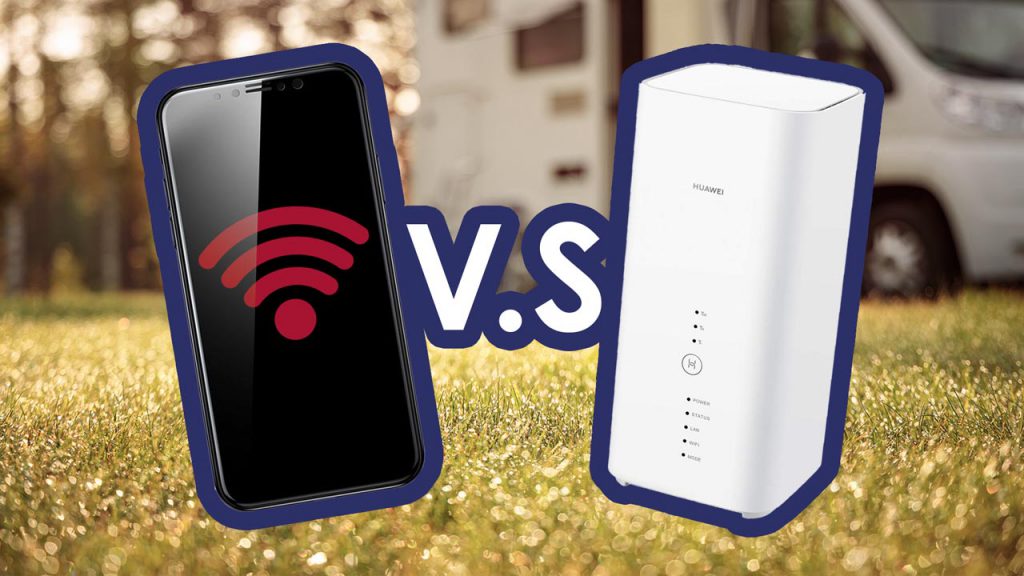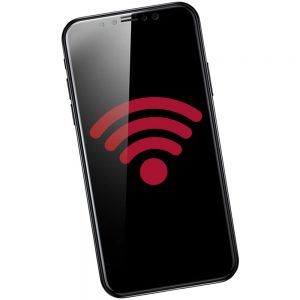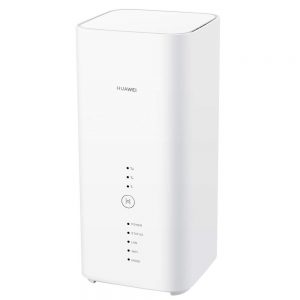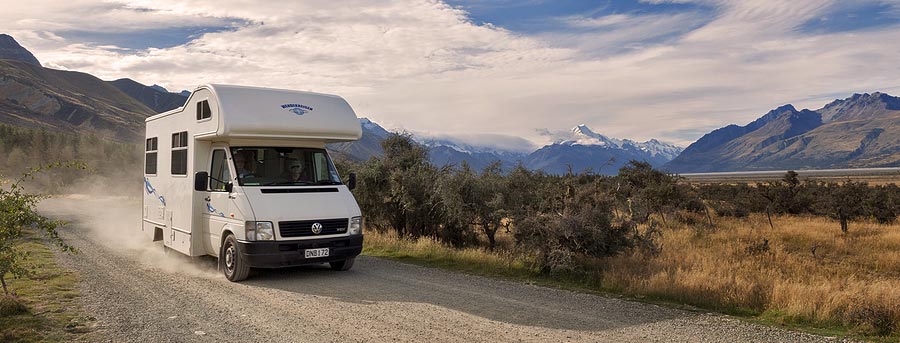What’s the best on-the-go WiFi connection?

Hotspotting from your phone vs portable WiFi router – which option is best for you?
Update 15/03/2022: Wireless Nation now offers Endless Data standard as part of its Lifestyle Broadband, Coastguard, and NZMCA packages.
From streaming a favourite show on a rainy day to firing off some urgent emails, we depend on the internet for both work and play, but when you’re on the road these simple activities can become a bit tricker.
You could find a local cafe with a WiFi hotspot and park yourself up for a while, or you could seek out somewhere with phone reception and rely on good old (potentially patchy) data.
Or, if you’re prepared, you could connect to your own dedicated WiFi connection via a portable modem from the comfort of your bach, motorhome, caravan or boat.
If you’re spending time this summer travelling the country – especially if you’ve got kids in tow – the internet is one luxury you don’t want to go without!
We’ve analysed the key things you need to know about your top two options – mobile hotspotting and a portable WiFi router – to help you find the best solution for your needs.
Portability and Signal
Mobile Hotspot

Hotspotting or “tethering” (connecting your laptop or other devices to the internet wirelessly via your phone’s data) is a simple solution – after all, you’ve likely already got all the tools you need at your disposal.
No extra tech, cables, or know-how is required, it’s as easy as switching on the hotspot on your mobile, and then connecting your laptop or other device as you would to a regular WiFi network. (If you’ve never tried it before, here’s a guide for iPhone and one for Android.)
However, it also has a huge downside – signal range. The antenna receivers in mobile devices are much smaller than dedicated modems, meaning that the signal you get through your phone will not be as strong as from a modem, and can’t reach as far.
This makes it only viable to use in areas that already have strong signal coverage, or you’ll struggle to form a stable enough connection to get anything done, and you can generally forget about streaming any shows or movies.
You’ll also find that hotspotting can quickly drain your battery, so it’s recommended that you either keep your phone plugged into a power source while hotspotting, or simply limit yourself to short bursts of activity and charge in between.
In terms of portability, hotspotting is the best option around – it’s ideal for people who only need occasional web access on their computer, and who are sticking to populated areas, like a long weekend away from the city.
However, if you’re looking for greater signal strength or are travelling further afield, you may struggle to get the connection you need – you’d be better off going for a portable modem.
Portable Modem

A portable modem is just that – a mobile modem that’s used to create your own WiFi network. It’s designed to travel with you in your motorhome, caravan, boat, or to your bach, and provide high quality internet wherever you roam (as long as you are in coverage). It can plug into either a standard 240v power outlet, or – with an adaptor – into your vehicle’s 12-24v cigarette lighter socket.
Thanks to the size of the modem’s antenna, signal can be captured from further away than a mobile device could reach, and at a greater strength too. Because of this, a portable modem is typically going to provide a much faster and more stable internet connection than a mobile hotspot could, which is ideal if you’re heading out to places where mobile coverage weakens – such as the many bays and beaches of NZ.
A stronger signal means that your online activities will run faster, whereas poor signal can lead to a slower response time for each click.
The portable modem comes with ethernet ports, which allows for devices that don’t have WiFi to plug in and connect, and can also be handy for older devices that were built using earlier WiFi technology to create a stronger and faster connection than they’d get over wireless.
For portability, a portable modem can’t match a mobile hotspot, as it’s an extra device to carry with you on the road, remember to pack, and set up. But if you’re travelling in a motorhome or boat, you can usually just set it up once and forget about it, tucking it away neatly in a utility cupboard. Once it’s set up, your devices will automatically connect each time it’s turned on.
However, when it comes to signal quality, usability, and overall “home away from home” experience – especially if you’re taking a family trip or staying outside of towns – a portable modem is the clear winner.
Data Use and Cost
Mobile Hotspot
Working off a mobile hotspot can quickly chew through data and become rapidly expensive. Mobiles often have lower data limits than home WiFi plans and charge more for each GB of data over and above your cap.
Although sporadic use for the odd email or to retrieve an online document won’t make a huge dent, if you’re streaming a TV show, watching YouTube, or doing anything that involves high-resolution image or video download, you’ll quickly find that your available data plummets and your bill begins to skyrocket.
To avoid getting caught out without a connection, it’s important before you go to check how much data you really have on your plan, even if you’re on an “unlimited” option. Most “unlimited data plans” will still have a cap, but instead of cutting off your data altogether, they simply reduce your data speed. At a reduced speed, hotspotting can become quite challenging, so check specifically for how much “full speed data” you have on your plan, and keep track of usage while on the road.
Not all mobile carriers offer tethering by default, and it may cost extra to upgrade to a plan that does include it, so be sure to check your plan details before you go. Wireless Nation’s mobile phone plans include hotspotting by default, and full-speed data for the full amount on your plan. See our mobile phone plans here, or if you are an NZMCA member we have special NZMCA mobile plans here.
For data use and cost, using your mobile as a hotspot is fine for writing occasional emails or writing reviews on TripAdvisor, but it likely won’t handle Zoom calls or YouTube funny cat videos for long.
Portable Router
We all experience those unwanted rainy days on vacation, when you’re bored with board games and can’t bear another round of i-spy. All you want to do is relax and keep everyone occupied.
Well, hello Netflix, Disney+, Amazon Prime, and Neon – with a portable router and Lifestyle or NZMCA Data plan (more about those below) you can watch all your favourite shows from the comfort of your motorhome or boat, with better streaming quality.
Again, like your home WiFi plan, with a portable WiFi router you’ll have a higher data limit, meaning more data at top speeds for a better price. You can carry on sharing your exploits on Instagram, video calling with your grandparents, and watching whatever you like with less worry about hitting your data cap.
Remember that usability, speed, and quality will still depend on what kind of signal you can receive in your location, see our maps here to check.
This plug-and-play device is also handy for families because it acts like a normal home WiFi modem, so everyone can connect their phone or device and no one’s losing out. Multiple phones, tablets, laptops, and even your smart TV can all be connected at the same time, just like home, making it a cost-effective and data-efficient choice for your road trip.
3 Steps to seamless on-the-go WiFi around NZ
1. Get a plan that works for you
With a Lifestyle Broadband plan, and special deals for NZMCA (New Zealand Motorhome and Caravan Association) and Coastguard members, all you have to do is plug it in, turn it on, and you’re good to go!
You don’t need to be a member of the NZMCA to sign up for the Lifestyle broadband plan, but Wireless Nation does offer special discounted plans for NZMCA and Coastguard members.
With both plans, you can also put them on hold when you’re not on the road (5 working days’ notice required after one-month minimum activation), so you don’t have to pay for a service you don’t use.
We have plans to suit just about everybody!
2. Check the coverage map to see what signal you’ll get
We love NZ for its rugged mountains and hidden valleys, but that also means less-than-great signal in many parts of the country. Check out our coverage map to see what quality signal you can get where you’re going, and be prepared in advance for those totally off-grid days.
3. Enjoy your holiday!
Soak up the sun, sights, and sounds of summer in NZ, and don’t forget to share your favourite snaps on social media! With a seamless WiFi solution wherever you are, you don’t have to be disconnected – until you want to be.

